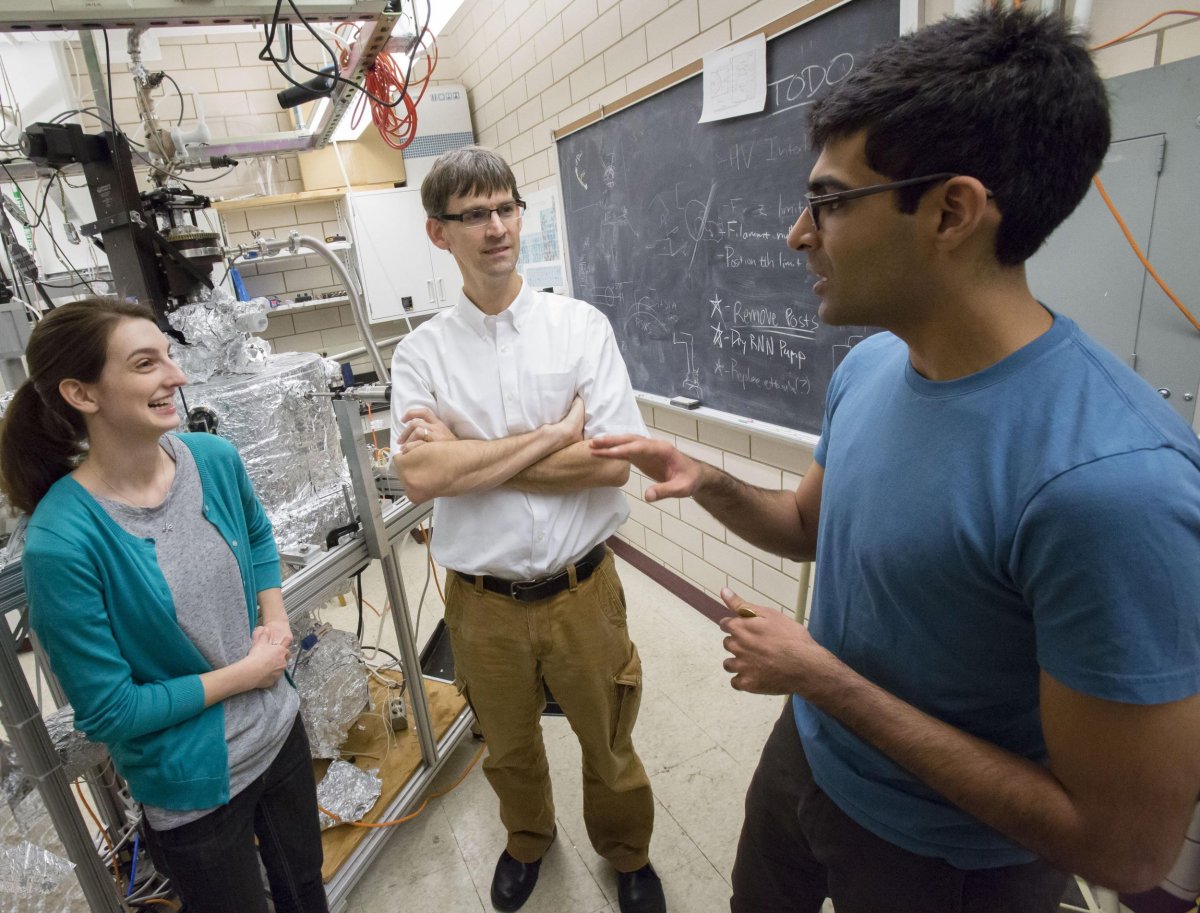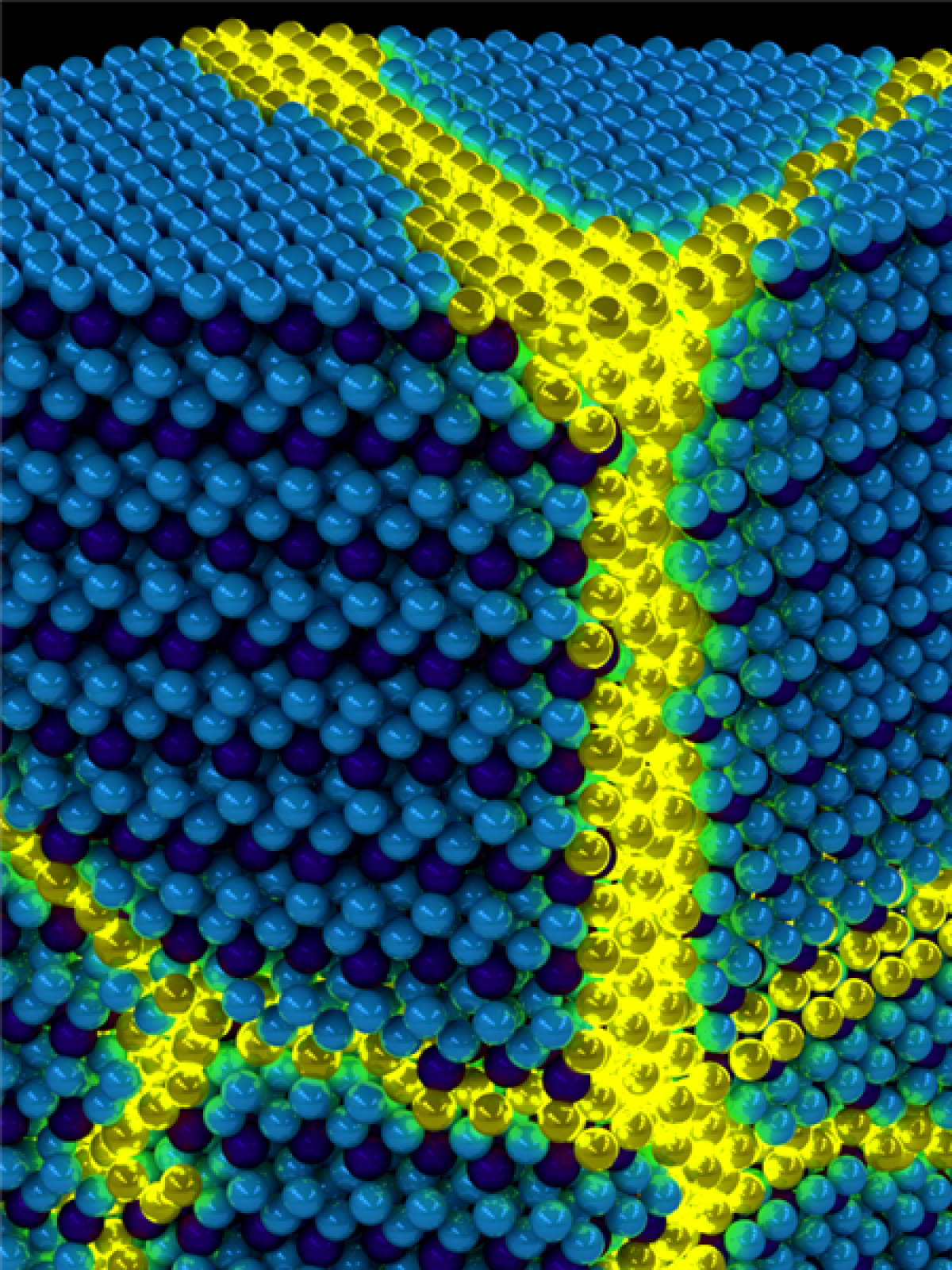
After 50 years of theories and thwarted attempts, scientists have finally proved the existence of a new form of matter. The never-before-detected condensate is called excitonium, a name first coined in the 1960s by Harvard theoretical physicist Bert Halperin, who is now 76. Peter Abbamonte, the physicist responsible for the discovery, recently saw him at a party; Halperin was, apparently, excited.
"It's as close to 'proved' as you're ever going to get in science," Abbamonte, a physics professor at the University of Illinois at Urbana-Champaign, told Newsweek. "You can never really 'prove' anything, but, well, people find it convincing."

Excitonium is a condensate, meaning what the researchers detected was a solid. Excitonium is made up of particles called excitons, in the same way that, say, solid aluminum is made up of aluminum particles. The exciton particles themselves, though, aren't created through quite as intuitive a process.
Let's start with something a little more conventional to compare to, like hydrogen. Hydrogen particles are made up of an electron and a proton. Exciton particles, then, are made up of an electron that's escaped and the negative space it left behind when it did so. The hole actually acts like a particle, attracting the escaped electron and bonding with it; they orbit each other the same way an electron and a proton would.
Previous scientists strongly suspected that excitonium existed, but they never had a good enough way of proving it. What Abbamonte and his colleagues did was invent an electron-scattering technique to detect the exciton particles' final result, excitonium. They started with a clean surface of the material in a vacuum—no air or anything else—and then scattered the electrons from its surface to make waves, like hitting the middle of a trampoline.
The particular way the waves spread allowed them to detect those escaped electrons in their final form, excitonium. It's not unlike the way the fabled Higgs Boson was detected. They call the technique momentum-resolved electron energy-loss spectroscopy, or M-EELS. A paper explaining the discovery was published in the journal Science.

Abbamonte and his colleagues started working on their scattering technique about seven years ago, but they weren't designing it to detect excitonium. They initially wanted to study high-temperature superconductors. In early 2015, through "total serendipity" as Abbamonte put it, they realized their work had the potential to prove the existence of a whole new kind of matter.
Excitonium is such uncharted territory that scientists don't yet know what its properties are. Some, said Abbamonte, think it will be an insulator, meaning it can't carry any energy or momentum. Others think it will be a superfluid, meaning it can carry both energy and momentum with no dissipation—so, the exact opposite.
If it does turn out to be a superfluid, it could be used to conduct electricity and energy. The next step, according to Abbamonte, is to figure out what exactly excitonium does, but for now it's too soon to speculate about its applications.
"The most important thing is that it exists," Abbamonte said. "It's one of those things that just ought to be there, you know? And it didn't make sense that it wasn't."
Uncommon Knowledge
Newsweek is committed to challenging conventional wisdom and finding connections in the search for common ground.
Newsweek is committed to challenging conventional wisdom and finding connections in the search for common ground.
About the writer
Kastalia Medrano is a Manhattan-based journalist whose writing has appeared at outlets like Pacific Standard, VICE, National Geographic, the Paris Review Daily, ... Read more
To read how Newsweek uses AI as a newsroom tool, Click here.








